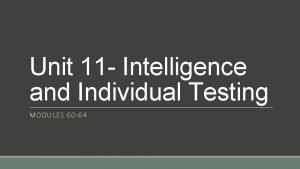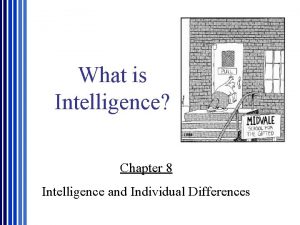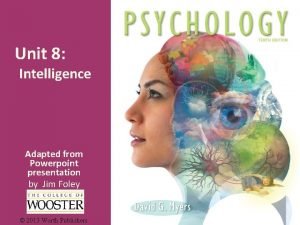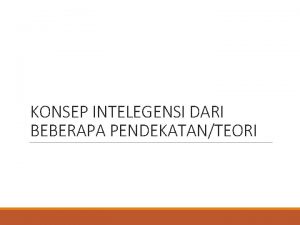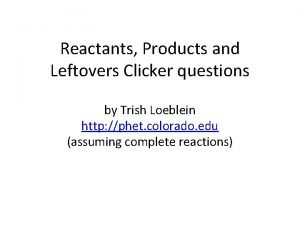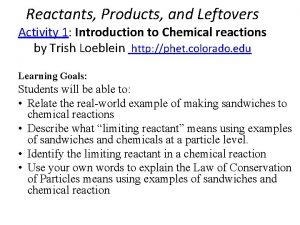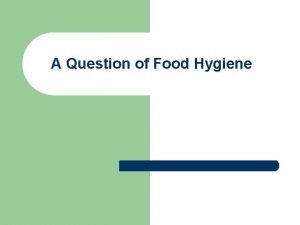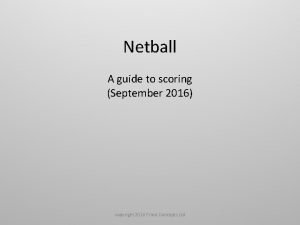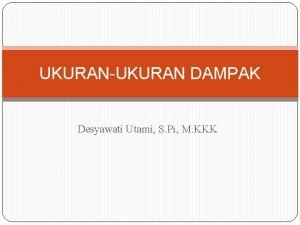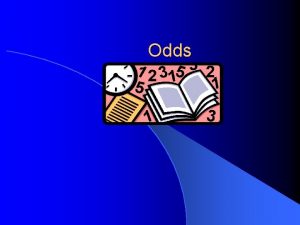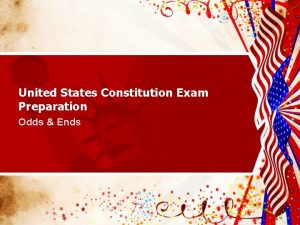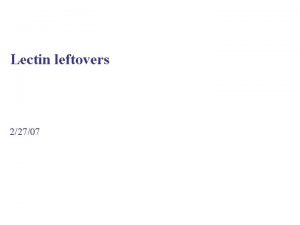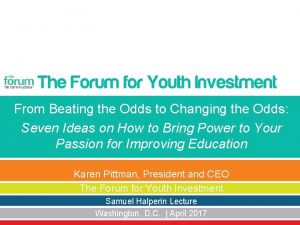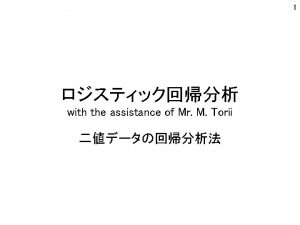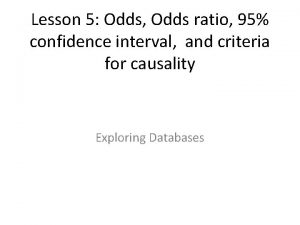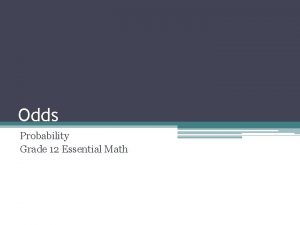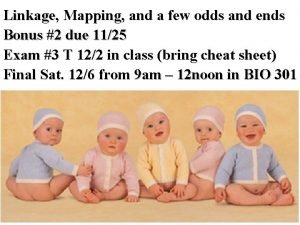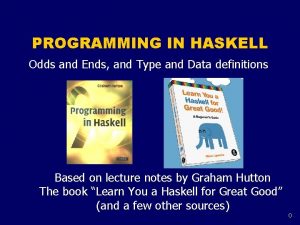Intelligence Odds and Ends The leftovers Crystallized and













- Slides: 13

Intelligence: Odds and Ends The leftovers

Crystallized and Fluid Intelligence As we age, we begin to lose what is called our fluid intelligence, our ability to reason speedily and abstractly. Studies show that this begins to decrease as early as our late twenties and thirties. It’s a slow process up until we hit about 75, and then the loss speeds up rapidly until death. However, while we lose this fluid intelligence, we continue to gain in crystallized intelligence, our accumulated knowledge and verbal skills. Unless you develop a serious (and relatively rare) mental disorder like dementia, you will maintain your collection of knowledge and wisdom throughout your life. Also, as previously mentioned, older people are less likely to be as heavily affected by negative emotions and situations.


Extremes of Intelligence At the low extreme of the normal curve are those with unusually low intelligence test scores. These are usually referred to as people with intellectual disability (formerly referred to as mental retardation, and a number of other dated terms). Intellectual disability is defined as a condition of limited mental ability, indicated by an intelligence score of 70 or below and difficulty in adapting to the demands of life. Several disorders can cause intellectual disability, including Down Syndrome and Fetal Alcohol Syndrome among others. Perceptions towards the intellectually disabled have changed over time, with more social acceptance and care available, as well as less criminal liability (in certain cases, such as capital punishment).

Extremes of Intelligence The other extreme end of the normal curve is generally referred to as “intellectually gifted”. Unlike intellectual disability, intellectually gifteddoesn’t have a set definition, although an IQ over 130 is commonly held, as that’s about the top 2% of the population. (That also happens to be the requirement to get into Mensa, the oldest and most respected IQ organization) Many famous researchers and scientists are, or were, considered geniuses. Those with the gifted appellation are much more likely to be published, have doctorates, and win awards. Some schools provide gifted programs as well as the required special education programs, but there is some controversy there, as we’ll see.

Nature vs Nurture, ad nauseam Once again, the Nature vs Nurture debate shows up. It is a fact that intelligence runs in families. But why is this? Is it a genetic trait being passed, or do strong environments develop strong people? Twin studies - every psychologist’s dream - show that identical twins raised together have IQ scores as similar as if the same person took the test twice, where fraternal twins are significantly less similar. Estimates of the heritability (the proportion of variation among individuals that we can attribute to genes) of intelligence range from 50 to 80 percent, and identical twins are also more likely to exhibit substantial similarities in in specific talents, like music, sports, art, etc.

There’s evidence for the environment side, too. While twins raised together do have an average similarity of intelligence scores of about. 86 (where 1. 0 is perfect match), identical twins raised separately drop down to about. 71. Factors such as quality of home life (books, poverty, nutrition, love and support, etc. ) do have an impact on intelligence as do the availability of advanced support in education. However, it seems that nature does seem to win out, ultimately. In an extended study with adopted children, while early in life adopted children may show similarities to their adopted brothers and sisters, as they age and develop life experience they veer off.


The “B” Word That’s right, bias is traditionally a huge problem in intelligence studies, in multiple ways. The debate on race differences with intelligence is often divided into three different camps: 1. There are genetically disposed race differences in intelligence. 2. There are socially influenced race differences in intelligence. 3. There are race differences in test scores, but the tests are inappropriate or biased.

Two Meanings of Bias In the popular definition of bias, we consider a test biased if it detects not only innate differences in intelligence but also performance differences caused by cultural experiences. This is what kept the Eastern and Southern Europeans from easily immigrating in the early 1900 s, as discussed previously. In this popular sense, intelligence tests are biased. They measure developed abilities which reflect life experiences. Differences in cultural terms and language can also affect scores in a test. However, defenders of existing tests argue that of course the aptitude tests will show differences for different cultures and groups of people, as they have those different background advantages and disadvantages, and that’s not the test’s fault (don’t shoot the messenger).

The scientific meaning of bias is different. It hinges on the validity of the test. If it only accurately predicts the future of a certain type of test-taker, then it is biased. For example, if it accurately predicts the college achievement of women, but not men, it would be biased. In this purely statistical meaning of the term, almost all psychologists agree that current aptitude tests are not biased, and equally predict future achievement, regardless of class, race, gender, or age.

Examples from the “Chitlin’ Test” 1. A "handkerchief head" is: (a) a cool cat, (b) a porter, (c) an Uncle Tom, (d) a hoddi, (e) a preacher. 1. Which word is most out of place here? (a) splib, (b) blood, (c) gray, (d) spook, (e) black. 1. A "gas head" is a person who has a: (a) fast-moving car, (b) stable of "lace, " (c) "process, " (d) habit of stealing cars, (e) long jail record for arson. 1. "Bo Diddley" is a: (a) game for children, (b) down-home cheap wine, (c) down-home singer, (d) new dance, (e) Moejoe call. 1. "Hully Gully" came from: (a) East Oakland, (b) Fillmore, (c) Watts, (d) Harlem, (e) Motor City.

Test-Taker’s Expectations The self-stereotypes that one has about one’s gender, class or race can affect their testtaking ability. This concept is referred to as stereotype threat, a self-confirming concern that one will be evaluated based on a negative stereotype. In one study, a group of Black test takers did fine on a test unless they were reminded of their race prior to taking the test, in which case they did worse. This could be considered a type of self-fulfilling prophecy, a belief that leads to its own fulfillment. Studies have shown that educators can help break minorities out of this cycle by focusing on the idea that intelligence and success is malleable, not fixed.
 Trichomoniasis
Trichomoniasis Fluid intelligence ap psychology
Fluid intelligence ap psychology Fluid vs crystallized intelligence
Fluid vs crystallized intelligence Example of crystallized intelligence
Example of crystallized intelligence Common sense vs intelligence
Common sense vs intelligence Crystallized intelligence
Crystallized intelligence Cyril burt theory
Cyril burt theory Phet products reactants and leftovers
Phet products reactants and leftovers Reactants, products and leftovers
Reactants, products and leftovers Reactants
Reactants The leftovers question 121
The leftovers question 121 Foam type icing
Foam type icing How to score netball odds and even
How to score netball odds and even Rumus attributable risk
Rumus attributable risk


